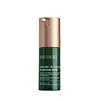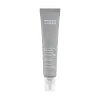What's inside
What's inside
 Key Ingredients
Key Ingredients

 Benefits
Benefits

 Concerns
Concerns

 Ingredients Side-by-side
Ingredients Side-by-side

Water
Skin ConditioningCaprylic/Capric Triglyceride
MaskingLactic Acid
BufferingSqualane
EmollientGlycerin
HumectantSodium Hydroxide
BufferingCetearyl Olivate
Propanediol
SolventSorbitan Olivate
EmulsifyingCetearyl Alcohol
EmollientLespedeza Capitata Leaf/Stem Extract
Skin ConditioningPolyacrylate Crosspolymer-6
Emulsion StabilisingAcacia Senegal Gum
MaskingSodium Gluconate
Skin ConditioningXanthan Gum
EmulsifyingPhenoxyethanol
PreservativeEthylhexylglycerin
Skin ConditioningLavandula Angustifolia Oil
MaskingLinalool
PerfumingWater, Caprylic/Capric Triglyceride, Lactic Acid, Squalane, Glycerin, Sodium Hydroxide, Cetearyl Olivate, Propanediol, Sorbitan Olivate, Cetearyl Alcohol, Lespedeza Capitata Leaf/Stem Extract, Polyacrylate Crosspolymer-6, Acacia Senegal Gum, Sodium Gluconate, Xanthan Gum, Phenoxyethanol, Ethylhexylglycerin, Lavandula Angustifolia Oil, Linalool
Water
Skin ConditioningAminomethyl Propanol
BufferingGlycolic Acid
BufferingLactic Acid
BufferingMandelic Acid
AntimicrobialIsoamyl Laurate
EmollientTartaric Acid
BufferingPropanediol
SolventSalicylic Acid
MaskingMalic Acid
BufferingButylene Glycol
HumectantClitoria Ternatea Flower Extract
Skin ConditioningSodium Hyaluronate
HumectantGlycyrrhetinic Acid
Skin ConditioningGlycerin
HumectantTocopherol
AntioxidantBisabolol
MaskingAllantoin
Skin ConditioningHydroxyethylcellulose
Emulsion StabilisingHydrogenated Lecithin
EmulsifyingXanthan Gum
EmulsifyingPolyglyceryl-4 Laurate
EmulsifyingPolyacrylate Crosspolymer-6
Emulsion StabilisingTitanium Dioxide
Cosmetic ColorantMica
Cosmetic ColorantPhenoxyethanol
PreservativeWater, Aminomethyl Propanol, Glycolic Acid, Lactic Acid, Mandelic Acid, Isoamyl Laurate, Tartaric Acid, Propanediol, Salicylic Acid, Malic Acid, Butylene Glycol, Clitoria Ternatea Flower Extract, Sodium Hyaluronate, Glycyrrhetinic Acid, Glycerin, Tocopherol, Bisabolol, Allantoin, Hydroxyethylcellulose, Hydrogenated Lecithin, Xanthan Gum, Polyglyceryl-4 Laurate, Polyacrylate Crosspolymer-6, Titanium Dioxide, Mica, Phenoxyethanol
 Reviews
Reviews

Ingredients Explained
These ingredients are found in both products.
Ingredients higher up in an ingredient list are typically present in a larger amount.
Glycerin is already naturally found in your skin. It helps moisturize and protect your skin.
A study from 2016 found glycerin to be more effective as a humectant than AHAs and hyaluronic acid.
As a humectant, it helps the skin stay hydrated by pulling moisture to your skin. The low molecular weight of glycerin allows it to pull moisture into the deeper layers of your skin.
Hydrated skin improves your skin barrier; Your skin barrier helps protect against irritants and bacteria.
Glycerin has also been found to have antimicrobial and antiviral properties. Due to these properties, glycerin is often used in wound and burn treatments.
In cosmetics, glycerin is usually derived from plants such as soybean or palm. However, it can also be sourced from animals, such as tallow or animal fat.
This ingredient is organic, colorless, odorless, and non-toxic.
Glycerin is the name for this ingredient in American English. British English uses Glycerol/Glycerine.
Learn more about GlycerinLactic Acid is another well-loved alpha hydroxy acid (AHA). It is gentler than glycolic acid but still highly effective.
Its main role is to exfoliate the surface of the skin by loosening the “glue” that holds dead skin cells together. Shedding those old cells leads to smoother, softer, and more even-toned skin.
Because lactic acid molecules are larger than glycolic acid, they don’t penetrate as deeply. This means they’re less likely to sting or irritate, making it a great choice for beginners or those with sensitive skin.
Like glycolic acid, it can:
Lactic acid also acts as a humectant (like hyaluronic acid). It can draw water into the skin to improve hydration and also plays a role in the skin's natural moisturizing factor (NMF) in the form of sodium lactate.
Studies show it can boost ceramide production to strengthen the skin barrier and even help balance the skin’s microbiome.
To get results, choose products with a pH between 3-4.
Lower strengths (5-12%) focus on surface exfoliation; higher strengths (12% and up) can reach deeper in the dermis (deeper, supportive layer) to improve skin texture and firmness over time.
Though it was originally derived from milk, most modern lactic acid used in skincare is vegan. It is made through non-dairy fermentation to create a bio-identical and stable form suitable for all formulations.
When lactic acid shows up near the end of an ingredient list, it usually means the brand added just a tiny amount to adjust the product’s pH.
Legend has it that Cleopatra used to bathe in sour milk to help reduce wrinkles.
Lactic acid is truly a gentle multitasker: it exfoliates, hydrates, strengthens, and brightens. It's a great ingredient for giving your skin a smooth, glowing, and healthy look without the harshness of stronger acids.
Read more about some other popular AHA's here:
Learn more about Lactic AcidPhenoxyethanol is a preservative that has germicide, antimicrobial, and aromatic properties. Studies show that phenoxyethanol can prevent microbial growth. By itself, it has a scent that is similar to that of a rose.
It's often used in formulations along with Caprylyl Glycol to preserve the shelf life of products.
Polyacrylate Crosspolymer-6 is a texture enhancer and pH adjuster.
It is be used to thicken water-based products and create a gel-texture with a velvet feel.
One manufacturer claims this ingredient to have a pH range of 2-8 and to be biodegradable.
Learn more about Polyacrylate Crosspolymer-6Propanediol is an all-star ingredient. It softens, hydrates, and smooths the skin.
It’s often used to:
Propanediol is not likely to cause sensitivity and considered safe to use. It is derived from corn or petroleum with a clear color and no scent.
Learn more about PropanediolWater. It's the most common cosmetic ingredient of all. You'll usually see it at the top of ingredient lists, meaning that it makes up the largest part of the product.
So why is it so popular? Water most often acts as a solvent - this means that it helps dissolve other ingredients into the formulation.
You'll also recognize water as that liquid we all need to stay alive. If you see this, drink a glass of water. Stay hydrated!
Learn more about WaterXanthan gum is used as a stabilizer and thickener within cosmetic products. It helps give products a sticky, thick feeling - preventing them from being too runny.
On the technical side of things, xanthan gum is a polysaccharide - a combination consisting of multiple sugar molecules bonded together.
Xanthan gum is a pretty common and great ingredient. It is a natural, non-toxic, non-irritating ingredient that is also commonly used in food products.
Learn more about Xanthan Gum